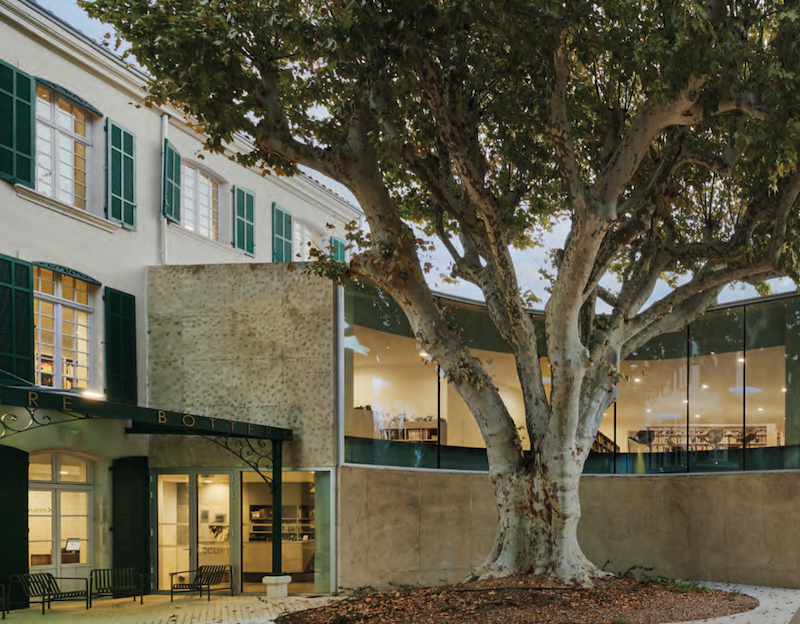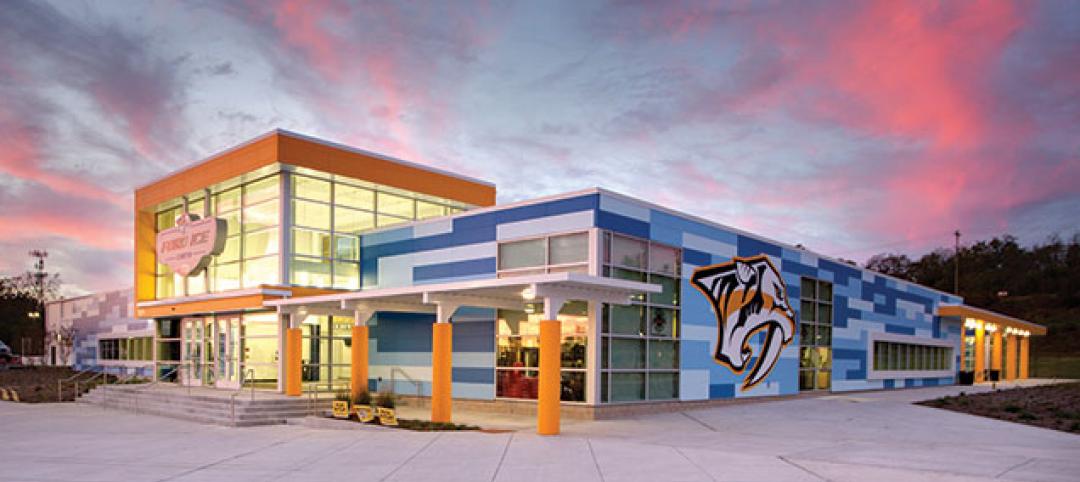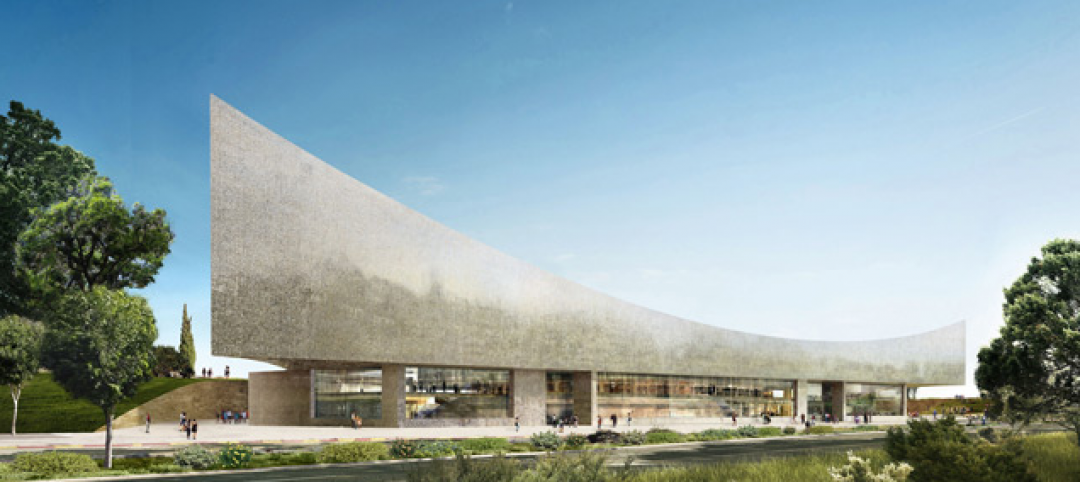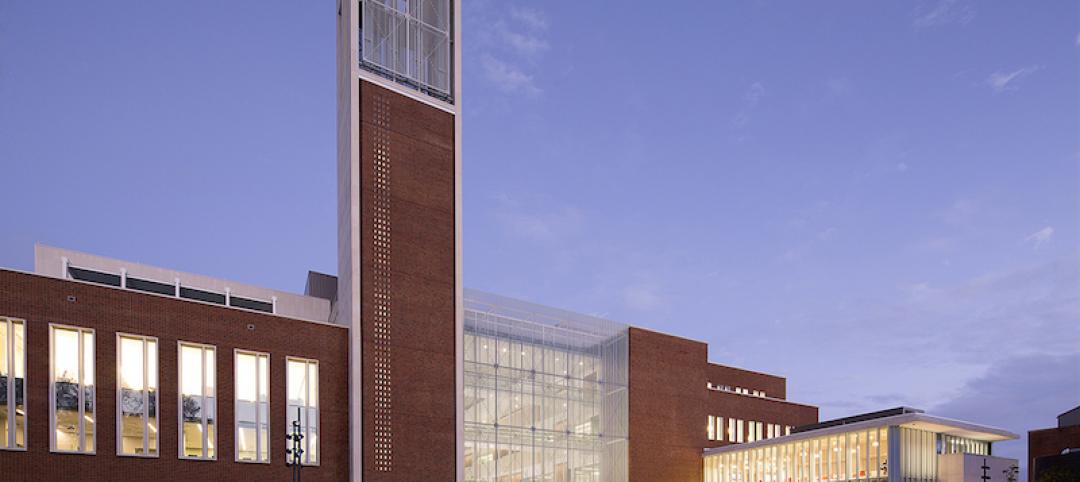Designed by Dominique Coulon & Associés, the new Pierre Bottero media library and public park has been created from a historic “Hôtel particulier” originally built in 1642.
Located in Pélissanne, an ancient fortified city in the heart of Provence, France, the project shifts between two eras and two dimensions: the verticality of the rehabilitated volume of the existing building and the horizontality of the extension. This dialogue is embodied in the contrast between the apparent homogeneity of the facades and the different shades of local materials used, such as ocher and Rognes stone.
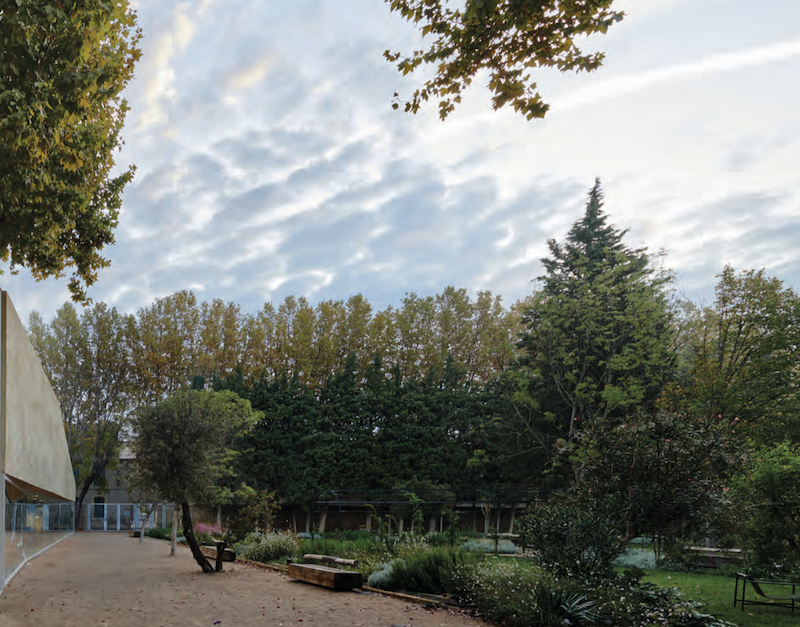
The classical spatial structure of interconnecting rooms was preserved in the existing building, which establishes a simple internal organization of the media library. The extension, meanwhile, displays large, flexible consultation spaces on two floors. The ground level opens widely into the park and allows visitors to immerse themselves in the landscape. The upper level offers a different atmosphere as it propels the visitor into the crown of a plane tree. Preservation efforts guided the curved shape of the extension.
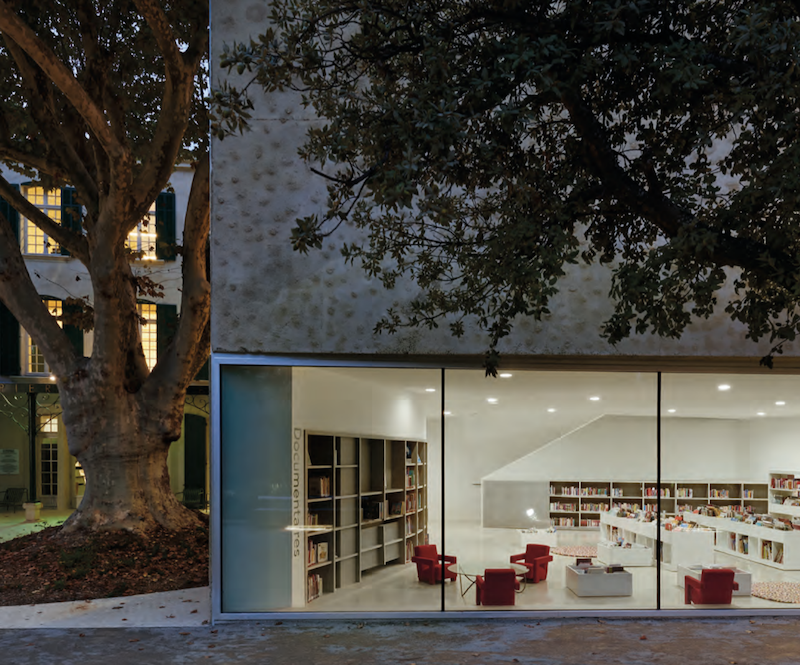
An adjacent building connects the town hall square and the park has been renovated into a passage that links different poles within a global and open urban system. The passage is materialized here by a totally empty space bathed in natural light. The existing floors, doors, and windows were removed and the tiles on the roof were replaced with glass tiles.
The park facade was maintained as is with its semi-circular porte-cochere. On the town hall side, the facade is open over its entire width, framing the park.
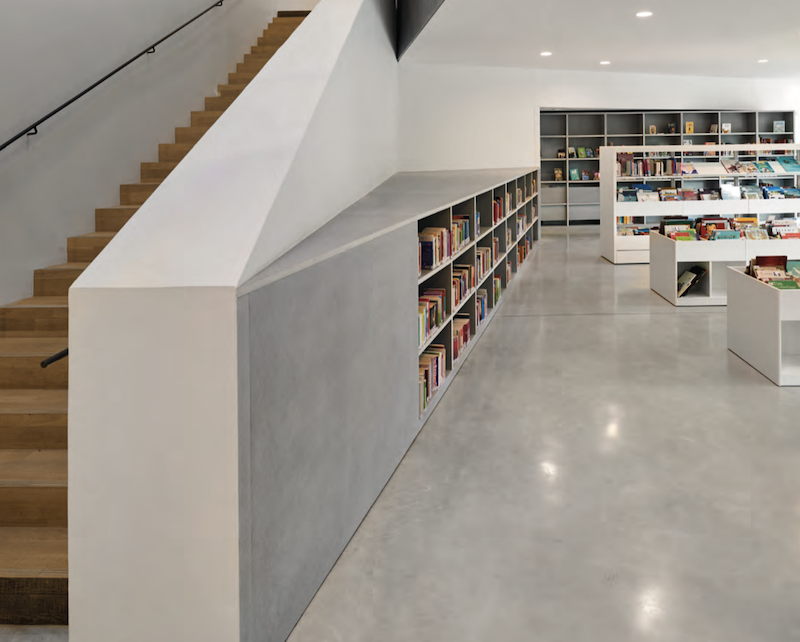

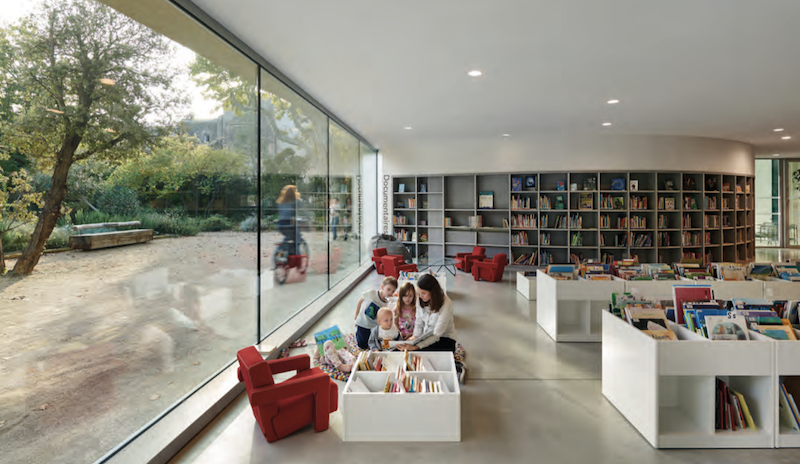
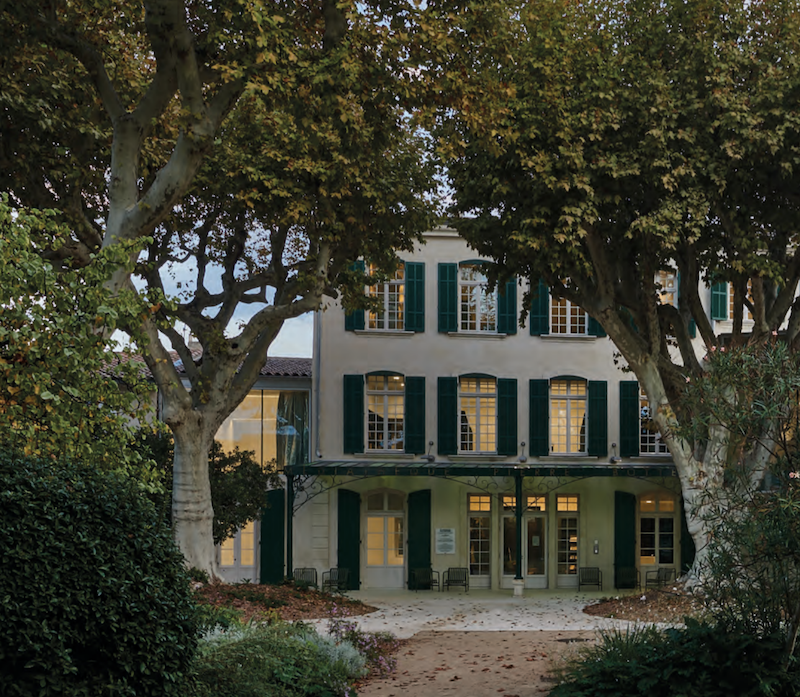
Related Stories
Sponsored | Cladding and Facade Systems | Mar 24, 2015
Designers turn a struggling mall into a hub of learning and recreation
Architects help Nashville government transform a struggling mall into a new community space.
Retail Centers | Mar 10, 2015
Retrofit projects give dying malls new purpose
Approximately one-third of the country’s 1,200 enclosed malls are dead or dying. The good news is that a sizable portion of that building stock is being repurposed.
| Jan 2, 2015
Construction put in place enjoyed healthy gains in 2014
Construction consultant FMI foresees—with some caveats—continuing growth in the office, lodging, and manufacturing sectors. But funding uncertainties raise red flags in education and healthcare.
| Dec 29, 2014
Spherical reflectors help spread daylight throughout a college library in Portland, Ore. [BD+C's 2014 Great Solutions Report]
The 40,000-sf library is equipped with four “cones of light,” spherical reflectors made from extruded aluminum that distribute daylight from the library’s third floor to illuminate the second. The innovation was named a 2014 Great Solution by the editors of Building Design+Construction.
| Dec 28, 2014
AIA course: Enhancing interior comfort while improving overall building efficacy
Providing more comfortable conditions to building occupants has become a top priority in today’s interior designs. This course is worth 1.0 AIA LU/HSW.
| Nov 10, 2014
Herzog & De Meuron unveils plan for National Library of Israel
The library’s new home will be a completely new building in Jerusalem, and will combine the functions of a central research center, a venue for indoor and outdoor cultural and educational activities, and a place for digital experience.
| Oct 16, 2014
Report: How to keep public libraries relevant in a digital age
Public libraries will avoid being relegated to the scrap heap of history in a digital age as long as they continue to serve as platforms for learning, creativity, and innovation that strengthen their communities, according to a new Aspen Institute report.
| Oct 16, 2014
Perkins+Will white paper examines alternatives to flame retardant building materials
The white paper includes a list of 193 flame retardants, including 29 discovered in building and household products, 50 found in the indoor environment, and 33 in human blood, milk, and tissues.
| Oct 15, 2014
Harvard launches ‘design-centric’ center for green buildings and cities
The impetus behind Harvard's Center for Green Buildings and Cities is what the design school’s dean, Mohsen Mostafavi, describes as a “rapidly urbanizing global economy,” in which cities are building new structures “on a massive scale.”
| Oct 12, 2014
AIA 2030 commitment: Five years on, are we any closer to net-zero?
This year marks the fifth anniversary of the American Institute of Architects’ effort to have architecture firms voluntarily pledge net-zero energy design for all their buildings by 2030.


